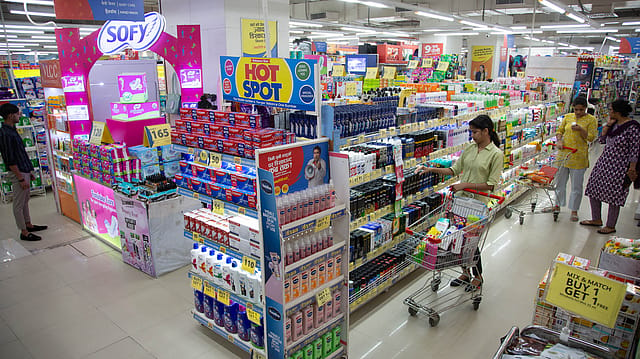Income tax cuts to facilitate FMCG, auto recovery: Moody’s
ADVERTISEMENT

Income tax cuts and the increase in exemption limit announced in the Union Budget 2025-26 are set to boost disposable income, particularly for urban middle-class households, according to Moody’s.
Growing consumption will particularly benefit manufacturers of two-wheelers, passenger vehicles and white goods, as well as ride-hailing service providers, the rating agency says.
The expected increase in disposable incomes will provide a significant boost to retail spending by India's large and young population, which typically has a high propensity to spend, says Moody’s.
India’s passenger vehicle industry, the world’s third-largest by unit sales in 2024, will maintain growth of around 4% in fiscal 2025-26 after experiencing sluggish sales over the last 12 months, forecasts the rating firm.
Moody's, however, says the foregone revenue due to tax breaks will slow the pace of the country's fiscal consolidation even as total spending declines as a share of GDP. In the budget for the financial year ending March 2026 (FY26), the government is targeting a fiscal deficit of 4.4% of GDP. This is 0.4 percentage point lower than the revised estimate of 4.8% for fiscal 2024-25 and represents half the pace of the 0.8 percentage-point narrowing recorded in each of the past two fiscal years.
December 2025
The annual Fortune 500 India list, the definitive compendium of corporate performance, is out. This year, the cumulative revenue of the Fortune 500 India companies has breached $2 trillion for the first time. Plus, find out which are the Best B-schools in India.
Under the new tax regime, the government has effectively eliminated direct tax liabilities for workers earning less than ₹12 lakh (about $13,860) per year to catalyse household consumption. The previous threshold was ₹7 lakh (about $8,100).
Although the government has estimated consequent foregone revenue at around ₹1 lakh crore (0.3% of GDP), it has continued to project a 14.4% rise in income taxes, contributing to an 11% rise in total tax receipts that is more rapid than the assumed 10% rise in nominal GDP, says Moody’s.
“As a result, the materialisation of dowside risks to income tax collection, which the government has budgeted to account for about one-third of gross tax revenue, would belie the government’s view of revenue buoyancy that hinges on improved compliance and the return of robust economic growth.”
Lower-than-expected revenue would further pressure debt affordability, says Moody’s. But the risk to the fiscal deficit would be mitigated by some level of underspending, especially on capital expenditure, it says. The government estimates that it will spend less than 92% of the budgeted allocation for capital expenditure in fiscal 2024-25, lower than the execution rate of around 95% in the previous year.
Moody’s says the budget will support a recovery in growth to 6.6% in FY26 from the government's first advanced estimate of 6.4% for FY25. In the first half of the current fiscal year, real GDP growth fell to 6% from 8.2% recorded in the year-ago comparable period.
“Domestic demand has remained steady, accounting for 61.2% of GDP, the highest level for fiscal first-half periods over the past 10 years. However, the recovery in demand is uneven between rural and urban areas. Rural demand saw a more visible rebound backed by record kharif production and favourable agricultural conditions. On the other hand, urban demand for autos and fast-moving consumer goods (FMCG) has moderated,” says Moody’s. “Various initiatives aimed at agriculture and rural infrastructure development will bolster consumer demand from rural India, especially for two-wheelers and entry-level cars,” it adds.
